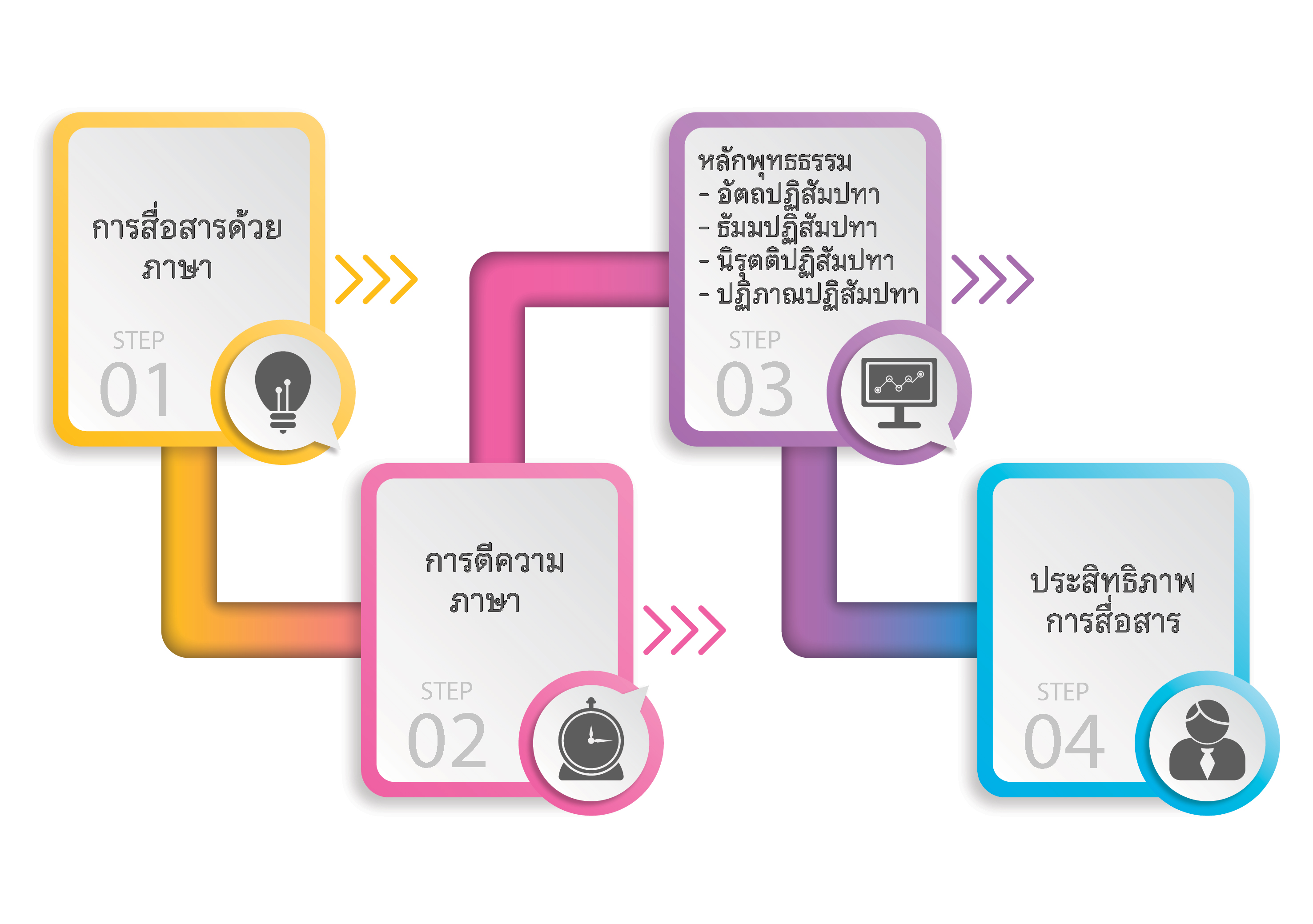Language Interpretation on Buddhist Principles for Effective Communication
Main Article Content
Abstract
This article aims to present the meaning and importance of language and interpretation for maximum communication efficiency, complete benefits for both individuals and society based on principles of the Buddhadharma.
Language is a means of conveying symbols to understand each other. There are 3 important elements: sound, structure, and the meaning which has four main characteristics: stabling, narrowing, broadening, and transient meaning. In order to understand the meaning correctly, interpretation is required.
Interpretation is something that always happens when communicating with both spoken and written language. Because interpretation is the analysis of words or messages that communicated to determine the true meaning of the word or message in accordance with the intent of the communicator.
Those who interpret language effectively should adhere to the principles of the Buddhadhamma: 1) Attha-patisampada, having knowledge in terms of content and meaning to expand. 2) Dhammapatisampada, wisdom in the Dharma, that is, in principle, the issue can be clearly defined. 3) Nirutti Patisapadha, proficiency in language, ability to understand language in words, idioms, and flavors in language, able to choose and apply for efficiency. 4) Patiphan-patisapadha, having a keen intelligence to keep up with ideas, being able to connect existing or inherited knowledge, create knowledge, solve problems, and create.
Article Details

This work is licensed under a Creative Commons Attribution-NonCommercial-NoDerivatives 4.0 International License.
เพื่อให้เป็นไปตามกฎหมายลิขสิทธิ์ ผู้นิพนธ์ทุกท่านต้องลงลายมือชื่อในแบบฟอร์มใบมอบลิขสิทธิ์บทความ ให้แก่วารสารฯ พร้อมกับบทความต้นฉบับที่ได้แก้ไขครั้งสุดท้าย นอกจากนี้ ผู้นิพนธ์ทุกท่านต้องยืนยันว่าบทความ ต้นฉบับที่ส่งมาตีพิมพ์นั้น ได้ส่งมาตีพิมพ์เฉพาะในวารสาร วิชาการธรรม ทรรศน์ เพียงแห่งเดียวเท่านั้น หากมีการใช้ ภาพหรือตารางของผู้นิพนธ์อื่นที่ปรากฏในสิ่งตีพิมพ์อื่นมาแล้ว ผู้นิพนธ์ต้องขออนุญาตเจ้าของลิขสิทธิ์ก่อน พร้อมทั้ง แสดงหนังสือที่ได้รับการยินยอมต่อบรรณาธิการ ก่อนที่บทความจะได้รับการตีพิมพ์References
ช่วย พูลเพิ่ม. (2537). สนุกกับภาษาไทย เล่ม 1. กรุงเทพฯ: ดอกหญ้า.
พระมหาสมบูรณ์ วุฑฺฒิกโร. (2560). ศาสตร์แห่งการตีความแนวพุทธ. พระนครศรีอยุธยา: มหาวิทยาลัยมหาจุฬาลงกรณราชวิทยาลัย.
ราชบัณฑิตยสถาน. (2546). พจนานุกรมฉบับราชบัณฑิตยสถาน พ.ศ. 2542. กรุงเทพฯ: นานมีบุ๊คส์.
_______ . (2552). พจนานุกรมศัพท์วรรณกรรม. (พิมพ์ครั้งที่ 18). กรุงเทพฯ: ราชบัณฑิตยสถาน.
สมเด็จพระพุทธโฆษาจารย์ (ป.อ.ปยุตฺโต). (2559). การสื่อสารเพื่อเข้าถึงสัจธรรม. กรุงเทพฯ: ผลิธัมม์.
_______ . (2559). พจนานุกรมพุทธศาสตร์ฉบับประมวลธรรม. กรุงเทพฯ: ผลิธัมม์.
อนุมานราชธน, พระยา. (2532). ความรู้เกี่ยวกับภาษาไทย. กรุงเทพฯ: ครุสภา.
เอกฉัท จารุเมธีชน. (2537). ภาษาไทยสำหรับครู. กรุงเทพฯ: โอเดียนสโตร์.

